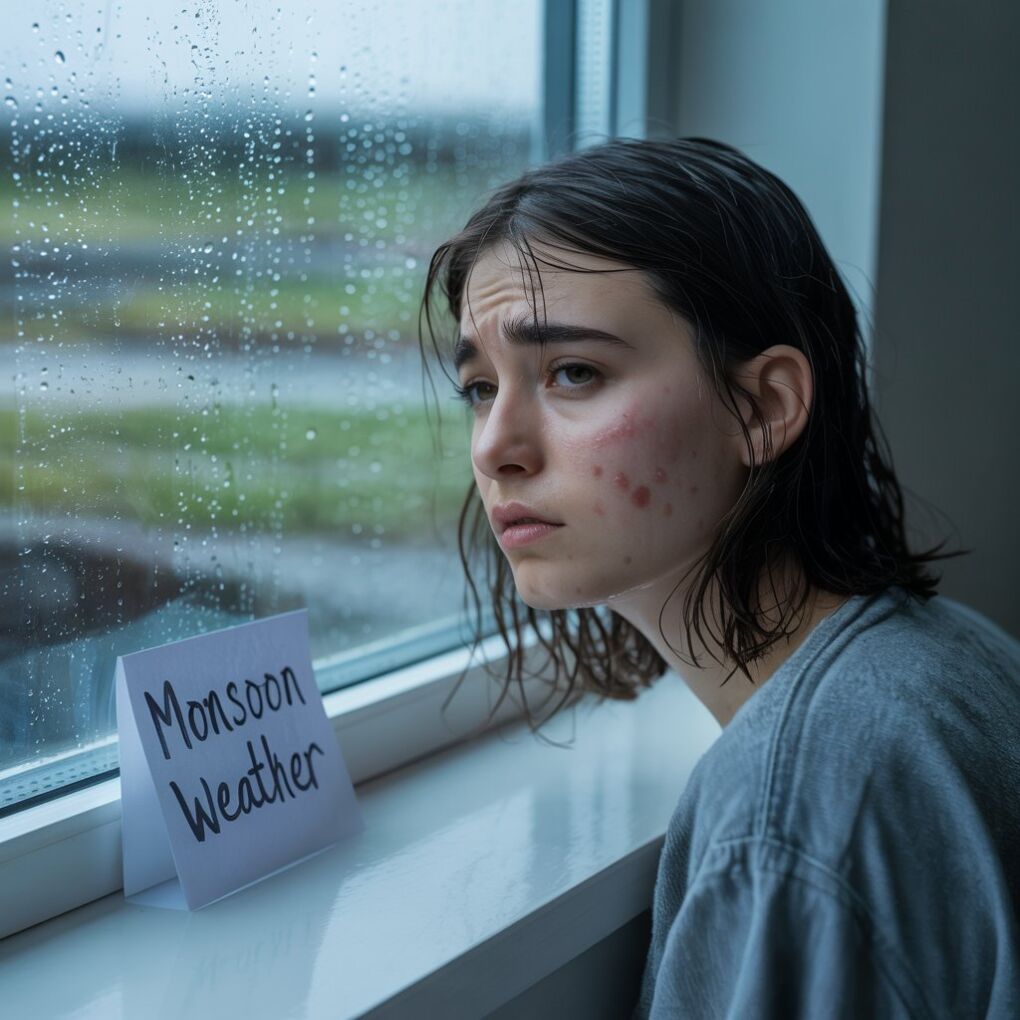The monsoon season is a welcome relief after months of scorching heat. Cool breezes, petrichor in the air, and lush greenery create the perfect backdrop for long drives and steaming cups of chai. Yet for many of us, the rainy months also bring a sudden surge in pimples, blackheads, and stubborn whiteheads that seem to pop up overnight. Why does your skin rebel just when the weather feels so refreshing—and, more importantly, how can you calm it down quickly?
Below, we break down the root causes of monsoon breakouts and share a fast‑acting plan to bring your skin back to balance. Throughout, you’ll see two hero products mentioned repeatedly: a niacinamide face serum and an oil free moisturizer. Used together, they can transform angry, humid‑weather skin into a clearer, calmer complexion.

Part 1: Why Monsoon Weather Triggers Acne
1. Humidity Overdrive
The number‑one culprit is moisture saturation in the air. High humidity makes sweat stay on the skin’s surface longer, mixing with sebum (your skin’s natural oil) and environmental grime. This cocktail blocks pores, allowing acne‑causing bacteria to thrive.
2. Excess Sebum Production
Your oil glands tend to work overtime in damp heat. More sebum means more opportunities for pores to clog, leading to blackheads, whiteheads, and inflamed pustules.
3. Compromised Skin Barrier
Constant toggling between air‑conditioned spaces and muggy outdoors can weaken the skin’s protective barrier. A compromised barrier struggles to keep irritants out and moisture in, increasing sensitivity and inflammation.
4. Fungal Activity
Warm, wet conditions create the ideal breeding ground for Malassezia yeast, responsible for “fungal acne.” Though technically not true acne, it looks like small, itchy, uniform bumps—often across the forehead and upper back.
5. Pollution & Bacteria
Urban monsoons bring puddles, traffic splashes, and airborne pollutants that stick to damp skin. If not cleansed away properly, these particles can aggravate breakouts.
Part 2: Fast‑Acting Treatment Plan
Step 1: Gentle, Twice‑Daily Cleansing
Use a mild, sulfate‑free cleanser to remove sweat, dirt, and makeup without stripping natural oils. Harsh cleansers can trigger rebound oiliness, making breakouts worse.
Pro Tip: If you exercise or get caught in the rain, rinse your face as soon as possible; letting sweat dry on your skin is an invitation to clogged pores.
Step 2: Apply a Niacinamide Face Serum
Niacinamide (vitamin B3) is a multitasking superstar. A niacinamide face serum delivers lightweight, water‑based hydration while addressing nearly every monsoon breakout trigger:
- Regulates sebum so your skin looks less shiny.
- Minimizes pores by boosting elasticity around follicle walls.
- Reduces redness and calms angry papules and pustules.
- Strengthens the skin barrier so pollutants and irritants have a tougher time getting in.
- Fades post‑acne marks for an even complexion over time.
Apply two to three drops after cleansing, patting gently until absorbed. Because niacinamide is non‑photosensitizing, it can be used morning and night.
Step 3: Lock It In With an Oil Free Moisturizer
Skipping moisturizer is a common mistake among those with oily skin. Deprived of hydration, your skin produces even more sebum to compensate. The solution is a lightweight oil free moisturizer that:
- Hydrates with water‑binding humectants such as glycerin or hyaluronic acid.
- Uses non‑comedogenic gel based to seal moisture without clogging pores.
- Soothes with calming agents like centella asiatica (cica) or panthenol.
By keeping your moisture barrier healthy, you reduce inflammation and slow oil production—a win‑win for breakout control.
Step 4: Targeted Exfoliation (1–2 Times a Week)
Instead of daily scrubs, choose a gentle chemical exfoliant containing low‑strength mandelic or lactic acid. These larger‑molecule AHAs dissolve dead‑cell buildup on the surface, helping active ingredients penetrate better and preventing dullness.
Step 5: Spot Treatments for Emergencies
For an angry pimple threatening to ruin your day, dot on a benzoyl peroxide or sulfur treatment only where needed. Both act quickly to kill acne‑causing bacteria and dry out lesions, but over‑application can irritate skin—so be strategic.
Step 6: Broad‑Spectrum Sunscreen, Rain or Shine
UV rays penetrate clouds and can darken post‑acne marks. Opt for a matte, sweat‑resistant SPF 30 or higher, formulated for oily skin. Layer it after your oil free moisturizer each morning.
Part 3: Supportive Habits to Keep Skin Clear
- Change Towels & Pillowcases Frequently
Damp fabric harbors bacteria. Swap them out twice a week during the rainy season. - Wear Breathable Fabrics
Avoid tight collars and synthetic shirts that trap sweat against the skin, especially if you’re prone to back or chest acne. - Hands Off Your Face
With wet umbrellas, phone screens, and steering wheels collecting germs, touching your face is an easy way to transfer bacteria. - Balanced Diet & Hydration
High‑glycemic snacks and sugary drinks can spike inflammation. Choose fruits, leafy greens, and plenty of water to support skin healing from within. - Quick‑Dry Hair Care
Long, damp hair resting on your cheeks and forehead can transfer oil and conditioner residue to your skin, clogging pores. Keep hair pinned up or blown dry.
Conclusion: Clear Skin, Even in the Rain
Monsoon breakouts may feel inevitable, but they’re not unbeatable. Understanding the unique challenges of humid weather—excess sebum, sweat‑sealed pores, barrier fatigue—empowers you to intervene quickly and effectively. A streamlined routine anchored by a niacinamide face serum and an oil free moisturizer delivers targeted relief without overwhelming your skin or your suitcase.
Consistency matters more than complexity. Stick to gentle cleansing, smart hydration, and protective habits, and you’ll notice fewer flare‑ups, faster healing, and a complexion resilient enough to face every downpour. With the right care, you can savor every rainy‑season memory—minus the monsoon pimples.
